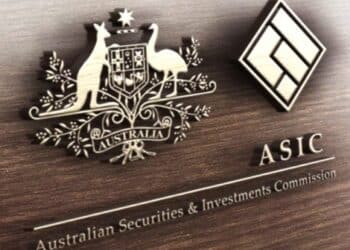Last year, France’s biggest fund manager, Credit Agricole Asset Management (CAAM), set up shop in Australia, joining Societe Generale Asset Management (SGAM), which has been here since June 2002.
They join Axa, which has been here since 1995 when it bought into the demutualisation of National Mutual, and BNP Paribas, which has had a presence in Australia since the late 1800s as a bank and since 1986 as an asset manager.
There are plenty of other big global operations in Australia, but given the French asset management industry is the biggest in Europe, it is likely their foray into the Australian market is more than a matter of dipping their toes in the water. In Europe, France has 21 per cent of the asset management market, followed by Germany at 17.7 per cent and the United Kingdom at 17.3 per cent. In global terms, it is second only to the United States, which has around 40 per cent of global assets under management.
French firms are well represented in the world’s top 30 asset management companies, according to a 2006 survey by Watson Wyatt. Among them are Axa at number 4, BNP Paribas (15), Natixis (17), CAAM (19) and SGAM (27). By comparison, Australia’s biggest firm is AMP, which comes in at 110. The entire French funds management industry is estimated to be at around €2.5 trillion (A$4.2 trillion).
There is a limitation on how far these firms can grow as fund managers in their home country. The French are famously good savers, but not in the form of equity funds. Of household savings in France, 41 per cent is held in the form of life insurance products (often working as structured defined-benefit products) with just 12 per cent held in mutual funds.
Hence the push by French asset managers beyond their own borders. French fund managers have a long history of expansion into continental Europe, and have taken a far more proactive role in exploiting the newly emergent area of Eastern Europe than the UK, Germany or the Netherlands. Asia too has long been an area of interest.
Credit Agricole for instance has a 26 per cent share of the market in Japan, and a strong presence in mainland China and Hong Kong, Korea, Singapore and Brunei. SGAM started moving steadily into Asia in the early 2000s and now has strategic partnerships in China, Japan, India and Korea.
According to CAAM Australia and New Zealand country head Richard Borysiewicz, it was simply a matter of time before the inherently conservative financial giant – originally an agricultural bank – got around to moving into Australia.
“We were the kind of bank that lent to the farmer next door. And for the past 20 years we’ve kept expanding next door through Europe and then through Asia,” Borysiewicz says.
Australia was the next logical step, he says.
Of course, it’s more than the inexorable global journey through the financial world that has lured these asset managers nearly 17,000 kilometres across the globe. Each of them acknowledges Australia’s funds management industry has become impossible to ignore.
“Given the Australian market is now the fourth biggest in the world – and growing fast – it’s become very difficult to ignore,” Borysiewicz says.
SGAM director of business and marketing Phil Filippelis says the firm was very conscious of Australia as a sophisticated and developed market in which it lacked a presence.
BNP Paribas Investment Partners Australia managing director Robert Harrison says it helps Australia’s financial industry is relatively easy and transparent to do business with.
But the newcomers are under no illusions that they will be embraced as fund managers by the general populace. While there may be a branch of Soc Gen and Credit Agricole on every street corner of France, to the average Australian they are an unknown quantity. Even after 12 years here in Australia (not to mention the 120 years here as a bank) BNP Paribas is hardly a household name.
SGAM claims it has no interest in targeting the retail market, concentrating purely on the institutional space, where its standing in the global industry is more likely to have resonance with professional asset consultants.
“In order to [target retail] you need to have a captive distribution and that is quite expensive and in an entrenched space,” Filippelis says.
BNP Paribas Investment Partners’ funds are aimed squarely at the high-end investor, with $500,000 minimums, although they are available on some wraps and master trusts.
CAAM is currently targeting institutional pension funds as well as “institutional quality” multi-manager funds, although it does have its sights on the platform market and investors with “the sophistication and interest to look at new managers and different approaches”, Borysiewicz says.
The newcomers are also pragmatic enough to recognise the value of offering a specialist suite of products that will make them stand out in the crowd.
At home SGAM offers dozens of funds across global and regional equities and fixed interest, but in Australia the emphasis is on structured products, derivatives and other specialist products such as infrastructure, private equity and hedge funds.
“We know that while Australia may be quite well served for asset managers, asset consultants are always looking for further skills and capabilities particularly in these more esoteric and specialist strategies,” Filippelis says.
CAAM, which currently has $1.2 billion under management, is also concentrating on areas such as global fixed income and active currency, and working on introducing volatility products, structured products and fund of hedge funds to the market here, Borysiewicz says.
Devising innovative financial products is something the French funds management industry has long been renowned as having a prowess, if not genius, for.
“The French have always been very good at engineering product in all fields of endeavour,” Harrison says.
Borysiewicz suggests the same skills that go into designing fashion and the AirBus are evident in the French approach to finance.
“The French approach can be characterised as starting with a heavy dose of science and mathematics . but ending up with a heavy dose of art. There is a certain flair to the product that is not just based on the numbers but on the interpretation,” he says.
That attribute may in part be due to the very heavy emphasis given to mathematics in the French education system, Filippelis says. “It gives our people the confidence to deal with numbers,” he says.
He suggests this facility has married with the need to deliver investment products to a people who were inherently suspicious of investing in growth assets.
“The French tend to be more risk averse than Anglo-Saxon countries, so in order to convince them to invest in growth products, asset managers have had to engineer products that incorporate capital protection just in order to get them to move up the risk curve,” he says.
While in Australia investors are not quite so keen on capital protection (although that they may have changed with the current volatility), the skills and products associated with protecting capital are easily turned to building products that align more closely to the Australian appetite for increased return, Harrison says.
“In terms of where the market is headed, structured and engineered products are what is in demand – and that is something the French are very good at,” Harrison says.
Nevertheless, while they are happy to be embraced for those products, each of the managers also hopes to expand its asset management menu to offer more regular equity investment products.
CAAM is planning to expand its emerging markets and Asian equities offerings, and plans to have money management capabilities here in Australia within three years.
BNP has always preferred a partnership model with other fund managers in each region.
SGAM wants to add to its global equities offerings (currently provided by United States-based partner TCW Group) and build an Australian equities team that brings a quantitative approach to stock selection.
All of them, however, insist that now they are here, they are here for the long term.
“Credit Agricole is a patient investor. We’re realistic enough not to expect to turn this around in a year. We’re here for the long term,” Borysiewicz says.
“We are definitely committed to this market,” Filippelis says.
While he may dismiss the newcomers tongue-in-cheek as ‘blow-ins’, Harrison agrees the managers are likely to be here for good.
The French are not short-term opportunists, he says.
“Once the French have made a decision to commit to a market, which can take time, it will be a long-term strategic commitment,” he says.







